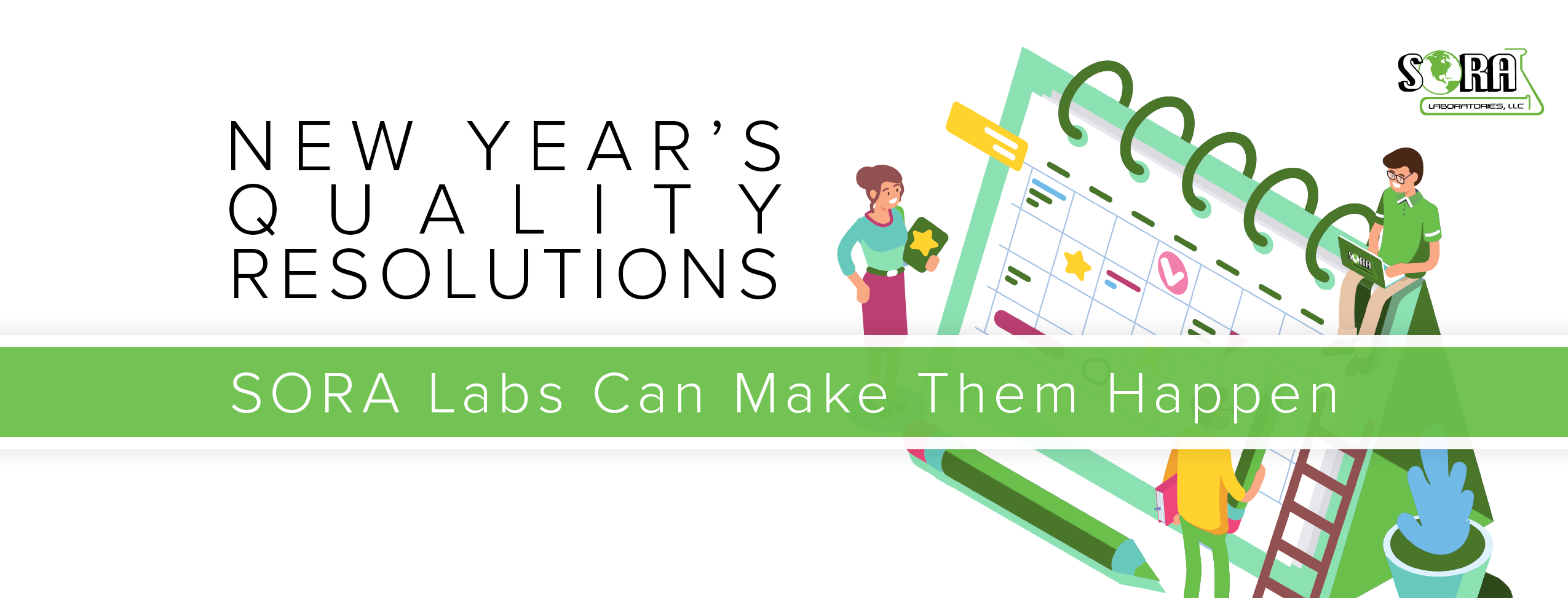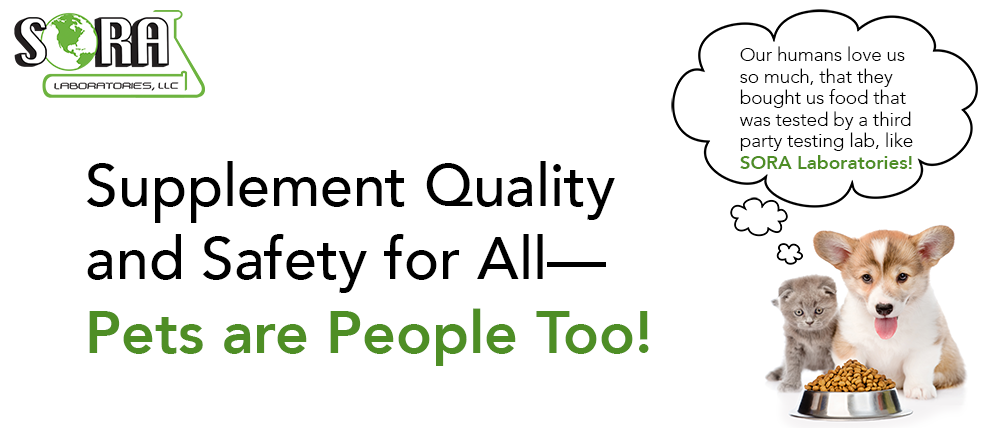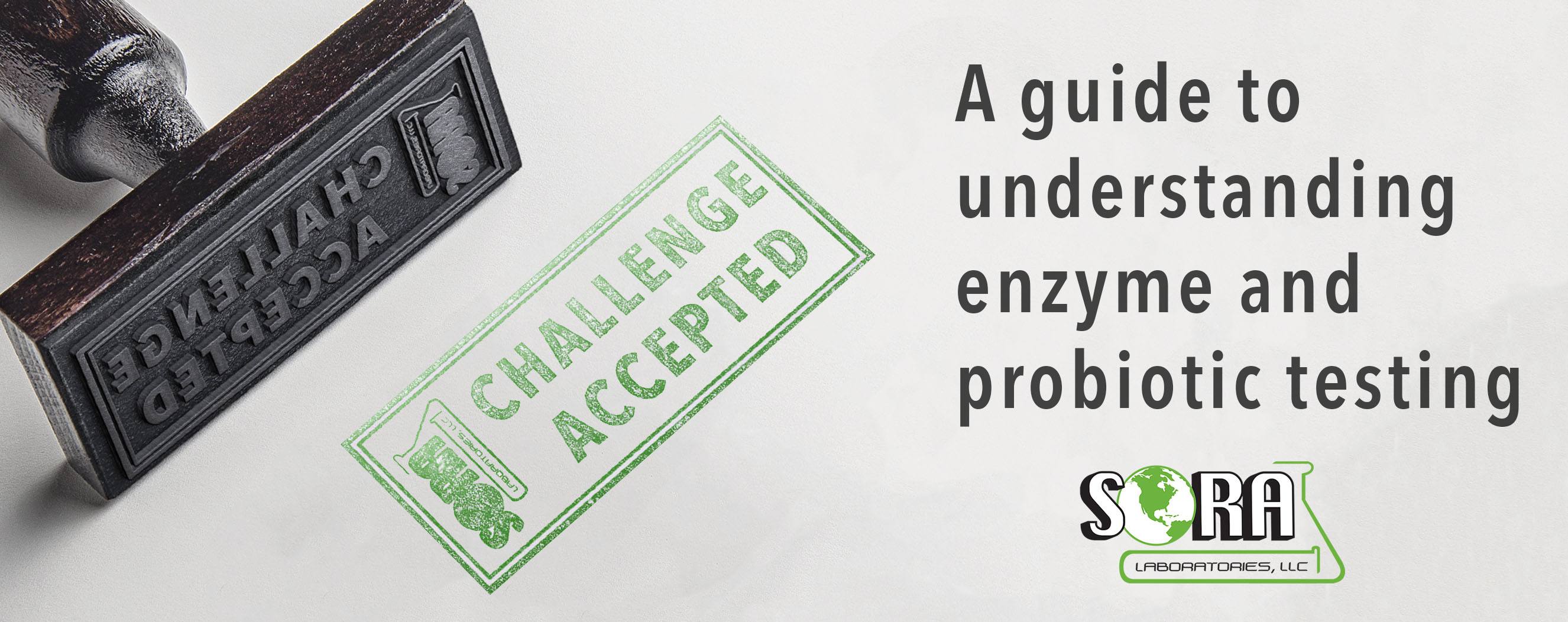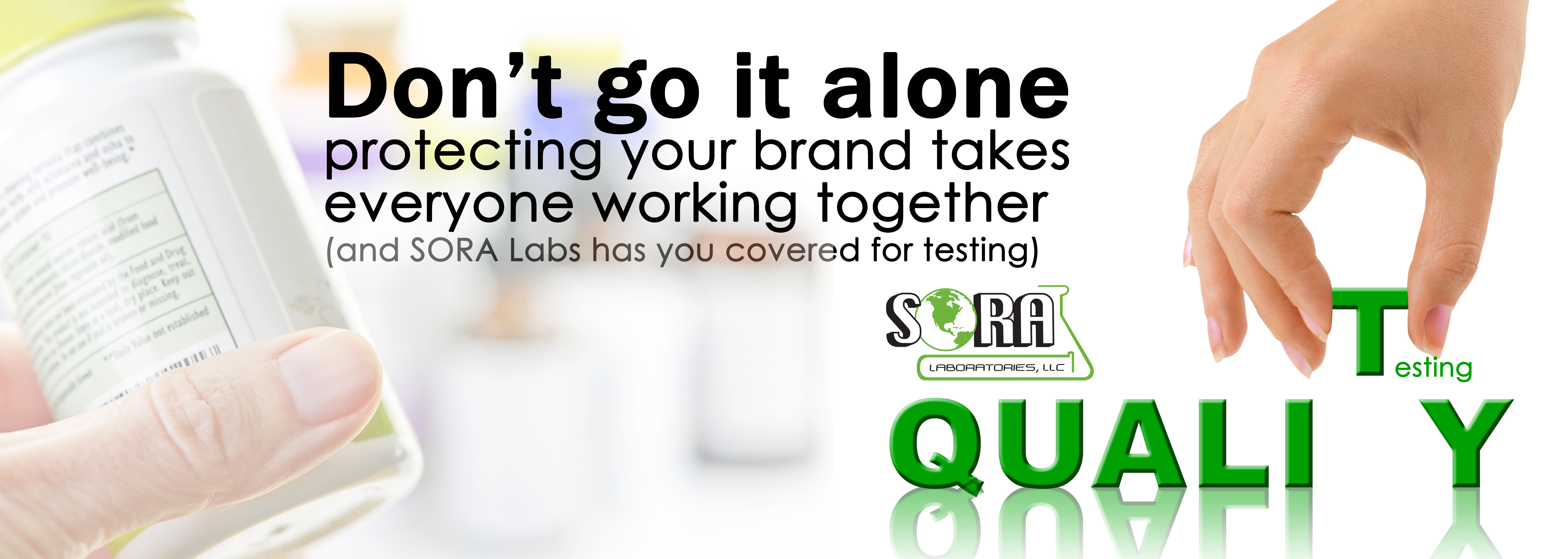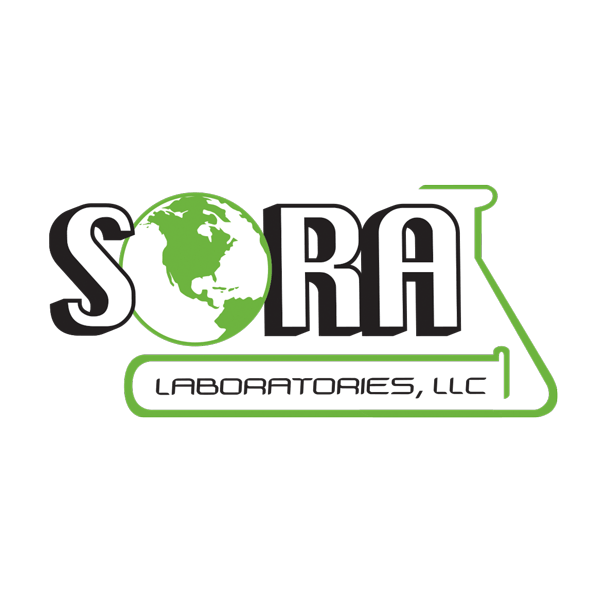As we head into 2019, it’s a good time to start planning your testing for the year. Did you have great intentions last year, but just didn’t get around to additional quality testing? The quality control and testing process can always be improved. Consider adding testing to improve the vendor qualification program or spot check products produced by outside contract manufacturers.
A good rule of thumb is to assess the testing you currently have in place and add additional tests where there may be gaps. Can you add new rotational tests like pesticide screening for botanical products? Maybe you would like to validate your ingredient suppliers by using pulsed photo stimulated luminescence (PPSL) screening to make sure they have not used irradiation practices to improve micro counts?
Another commonly overlooked area of testing is in product stability. When labeling products with expiration dates, accurate stability data is required. Since this can be a time-consuming process, starting a stability project in January will give you almost 12 months of data by the end of the year.
There is no time like the present to organize your testing needs and projects for the year. In our fast-paced industry, a well-planned strategy for implementation and execution will make for a less stressful 2019! Let SORA Labs help make your year a breeze with our expert service offerings and support. Let us quote (Link to Contact form) your next testing project today!
Supplement Quality and Safety for All—Pets are People Too!
Pets are an important addition to the American family and most pet “parents” want the same product assurances for their pet’s supplements as they do their own. Testing is necessary to ensure pet supplements are safe and meet label claims. It’s also an integral part of selling a high-quality product. But, what tests need to be run?
It’s always a good idea to run a standard microbiology testing panel that includes aerobic plate count, coliforms, e.coli, yeast and mold, along with salmonella. Negative results provide peace of mind that harmful bacteria are not included in your products.
Heavy metals testing including arsenic, cadmium, mercury and lead, will show levels of unwanted and often poisoning contaminants that may be found in some ingredients used in pet supplements. Most often, these are found in extremely low levels with results reported in parts per million. As a responsible marketer or manufacturer, it’s important to consider the intended dose for the pet and do your homework to determine if the levels will be safe.
Usually, there are many label claims tied to pet products and each claim will require active marker testing to support the validity of the claim. For ingredients like vitamins and minerals, the label will usually indicate gram, milligram or microgram amounts of that marker. But for other specialty ingredients like probiotics or enzymes, the label should indicate specific activity units. For example, if the product contains probiotics, then enumeration of good bacteria should be labeled in Colony Forming Units/g (CFU/g). The CFU count will be a combined total of all probiotics contained in the product.
For enzymes, the active ingredient marker will be specific for the type of enzyme included in the product. Acronyms are often used on the label indicating the specific protease, amylase, lipase or other enzyme that’s included in product. Activity units are used to measure enzyme potency and show that the enzyme is viable in the formula. They also confirm that enzymes are capable of doing the work they were intended for, such as breaking down food for digestion or other systemic functions. Be cautious of labels that list only the milligrams or weight of the enzyme, as this is not a best practice and can raise questions regarding the quality of the enzyme supplement.
While supplement testing in finished pet products can be challenging, using a lab that is experienced with methods for supplement products and is familiar with interactions in these complex matrixes is the key. We understand how important it is to put only safe, quality pet products on the market. SORA Labs wants to be your pet supplement specialty testing partner!
Challenge accepted . . . A guide to understanding enzyme and probiotic testing
Similarities between enzyme activity assays and probiotic enumeration are more common than most people realize. Both methods of testing require many dilutions, multiple calculations and are technique-driven. Our lab performs the probiotic colony forming unit (CFU) assays in our microbiology lab, and enzyme activities are tested in our chemistry lab. Both probiotics and enzymes aid in digestion and have potency that cannot be measured by weight or mg. Instead, probiotics are measured by CFUs and enzymes are measured in various activity units, with both having a variety of assay methods available. The ingredient supplier will often have a specific method for their product, and there may also be compendial methods listed in the Food Chemical Codex (FCC). While probiotic suppliers have not started standardizing to the compendial methods as of yet, enzyme ingredient suppliers use the FCC methods to standardize their products, for the most part. As time goes on, the probiotic industry may start standardizing to similar methods like the enzyme industry.
Both probiotic enumeration and enzyme activity assays listed in the FCC, are designed for raw material ingredients. Ideally, these assays should be performed on an ingredient before it is blended with other ingredients or encapsulated as a finished product. When multiple enzymes or probiotic strains are blended together, the testing becomes more difficult. There are common interferences with blended enzymes products, and also challenges with the multiple probiotic blends. Since each blend is unique and will interact in its own way, testing them can be tricky. However, it is possible to have successful results and gain valuable data about your product when tested correctly.
But, just as there are many similarities, there are also differences. Probiotic strains are living organisms, where enzymes are not. Instead, enzymes are ingredients, which break down food, whereas probiotics add to our gut flora for various health benefits. Lastly, enzyme activity is measured by substrate breakdown, instead of plate growth which measures probiotics.
Ultimately, both have complex test methods and require a high level of expertise and years of practice to perform accurately. SORA Labs is your trusted partner for both enzyme and probiotic With developed methods, we can help you learn more about your product through Testing is the only valid method to prove the quality of your product, so choosing an experienced lab is a must. Call us today for a quote!
You can’t go it alone—protecting your brand takes everyone working together!
The quality of the products under your brand is one of the most critical aspects of business success and vendor/supplier qualification is one of the most important steps in that process. In fact, this step is required in the Code of Federal Regulations (CFR) 111.75. Furthermore, to avoid warning letters, build confidence and maintain a positive reputation in the marketplace, safe and tested ingredients are a must.
CFR 111.75 outlines a very detailed process to follow. One of the first steps in establishing the reliability of the supplier’s certificate of analysis (CoA) is through confirmation of the supplier’s test results or examinations. This can be accomplished by setting the specifications and then testing using one or more methods for identity, purity, strength and composition of the component or ingredient. Also required by CFR 111.75 (c)(1), is testing for limits of contamination that would lead to adulteration of the finished product. This testing verifies that the vendor shows identity and acceptable levels of active ingredient markers. It also ensures that there is no microbial contamination, heavy metals, pesticide residue or other harmful contaminates.
Another key to supplier qualification is the supplier audit, which provides valuable information about the quality management system of the supplier. It also shows how the material is tested and how the vendor will ensure specification compliance from batch to batch, along with many other aspects of the company’s processes. By combining testing with supplier audits, a brand can consistently monitor the supplier and build confidence in its ability to produce high-quality ingredients. Once the supplier has been qualified, then reduced testing might be an option.
One FDA response letter (Addressed to Heron Botanicals Inc. on May 25, 2015) prompted the company to defend its position that it makes no claims to the amount of “active ingredients” in its finished product. As such, the company argued that testing was not needed for the “active ingredients” in the raw material. The FDA disagreed with this response because the company lists a 70 percent extract material on its label. Without testing the raw material, the company was unable to prove it started out with a 70 percent extract.
If this company had established a supplier qualification and showed testing results for the raw material over several lots to prove it met label claims repeatedly, then it may have been able to justify not testing the raw material “active ingredient” for this product. In this instance, the documented supplier qualification may have been all that was needed to avoid a warning letter.
Vendor qualification, although an often under-utilized process, is really the key to safe and high-quality ingredients. By testing raw materials and qualifying suppliers, this will strengthen the quality of your products and help protect your brand. Ultimately, It takes everyone working together to ensure the quality of the supply chain—and that definitely should be the main goal of any manufacturer. Are you doing your part to avoid FDA warning letters and produce quality products by working with a quality, certified and accredited testing lab? If not, SORA Labs can be your partner in quality!
Ingredient adulteration—what you need to know now!
By definition, adulteration means, “to make impure by adding extraneous, improper or inferior ingredients.” The FDA/USDA considers “adulteration a legal term if a food product fails to meet federal or state standards. This usually refers to noncompliance with health and safety standards as determined in the US, by the FDA and the USDA.”
In a recent FDA warning letter to TerraVare, Inc., dated 7/12/16, the FDA stated: “These violations cause your High Frequency Super Food Formula dietary supplement products to be adulterated under Section 402(g)(1) of the Federal Food, Drug, and Cosmetic Act (the Act) [21 U.S.C. §342(g)(1)] because they have been prepared, packed or held under conditions that do not meet the CGMP regulation for dietary supplements.”
Adulteration can happen in many forms. One example is adulteration with illegal or tainted substances. Other issues may include heavy metal contamination; high level microbiological counts; and residues like pesticides or solvents. Testing is the key to knowing exactly what is in your products, although not every adulterant can easily be found. However, if you are testing for known contamination and adulteration potentials, this is a great place to start finding any problems.
Case in point—in 2013, an enzyme recall occurred after chloramphenicol, an antibiotic drug residue, was found in digestive enzyme products. No one would have ever expected an adulterant or illegal substance in this type of product. As a result, many enzyme manufacturers now screen incoming raw materials for chloramphenicol, as it’s now considered an adulterant to watch for in these types of products. Subsequentially, testing for chloramphenicol residue in enzymes is now a normal quality check, performed routinely in our lab.
When choosing what testing is needed for your materials, you must evaluate the product for known contamination risks. Since botanical or herbal ingredients are grown outside, potentially coming in contact with pesticides for insect control, a pesticide residue screen would be able to verify that the botanical is clean and free from any pesticide residue. For botanicals labeled organic, this is even more critical, as unintended contamination from pesticide runoff in other fields could have occurred. The pesticide residue must be monitored to ensure that the material would not be considered adulterated
Plant material and anything grown in the soil, is also susceptible to higher heavy metal and microbiological counts in countries with crude waste disposal or poor water quality. Botanical ingredients must be tested to ensure that they are safe for human consumption. Also, since microbiologic counts could be high in botanical materials, processors may use irradiation treatments to help lower the bacterial counts. In many countries, including the US, materials that have been irradiated must be labeled as such. USP <2250> Pulsed Photo Simulated Luminescence (PPSL) was added to the USP in 2015 as a testing method to detect irradiation of ingredients. Testing to determine if your material has been irradiated will allow you to label your finished product correctly.
Adulteration of products is serious business, as many high-profile supplements have been abruptly yanked off the shelves by the FDA because they included illegal ingredients. It is imperative to make sure your product matches your label claims and is free of any unintended ingredients. Your quality team will be tasked with deciding what testing is needed for each material that will be used in manufacturing, and knowing who to call for your testing needs is paramount. Just know, SORA Labs is always here to help with testing any of your testing needs—let us be an extension of your quality team!
Why we soar above the rest!
Don’t use an imitation—use the original. Experience counts!
Our lab qualifications:
We are one of the only labs with enzyme assays on our ISO 17025:2005 Scope of Accreditation. This means we:
- Have a stringent proficiency testing program in place. We want to ensure that our testing is accurate, reliable and repeatable.
- Use Reference or Check Standards with each method we run. The test results must be within a certain RSD% for the run to be reported. Not all testing labs use standards. See our blog for additional information on what mistakes your testing lab may be making.
- Have been chosen as a testing lab for the U.S. Pharmacopeia to verify some of the reference standards that they sell. Our reputation and quality testing are used by the top of the industry.
- Run enzyme assays every day, as this is a large volume of our business. With 25+ years of experience , these USP enzyme methods are long and tedious and have been perfected over time. Unlike HPLC methods that can easily be adapted to any lab, these are more complicated wet chemistry reactions to measure the activity of the enzyme, not just the amount used in the product. Read more here.
- Focus on customer service and partnership with your company. We want to be here for the long term, not just one sample. We gladly communicate about the results or answer any questions that you have about your
- Have annual ISO external audits and also conduct annual ISO internal audits. We strive for continual improvement and perform preventive and corrective actions.
Top Quality Testing=Top Quality Products
Probiotic testing challenges—the right lab makes all the difference!
Probiotic testing can be complicated. Here’s why—most of the testing methods available are for single strain raw materials. Additionally, many methods come from the manufacturer and are specific to their material. And if that didn’t create enough confusion about what testing was appropriate, the Food Chemical Codex (FCC) has also added several probiotic monographs. These monographs have procedures for identification, enumeration assays and specific Whew! So how can you decide which testing method to use—the answer lies within using a lab that is experienced in probiotics.
An experienced lab like SORA, will know that the identification portion of the FCC monograph is for nucleic acid-based identification using PCR or other genetic identification methods. The assay portion of the monograph uses various growth media and specific aerobic or anaerobic conditions for optimal growth of the probiotic strain. The specific test section will have testing recommendations for that particular strain of probiotic.
Since these procedures require specialized equipment, and specific agars and broths to perform the testing, this can be challenging due to the high growth counts of this material. Typically in a microbiology lab, the samples being tested have very low plate counts, but with probiotic material, high counts in the millions or even billions of cfu/g are expected. Lab contamination is also a concern when working with probiotics, so proper sample handling is very important to ensure that the testing environment and air quality stays clean. Because of these challenges, working with probiotics in a separate section of the lab and at separate plating times is often required to avoid microbiology contamination of other samples in the testing lab.
While finding the best assay method may be difficult when working with blended probiotic strain products, reviewing the individual strain methods and looking for overlapping testing is generally a good starting point. And, since there may not be one “ideal” method, the testing lab may need to attempt several probiotic methods and perform method development before exact testing can be determined for the specific product.
With so many challenges, it may seem daunting to make sure your product is being properly tested! However, choosing a lab that is accustomed to handling probiotic material and performing specialized testing such as SORA Labs, can take the stress out of making sure your product meets label claims—choose wisely.
What mistakes is your testing lab making?
Is your lab using reference standards when performing testing? We’ve found that not all labs do this—in fact, we tested against one lab recently that was not using a reference standard with their FIP Lipase method. What a mistake! Without a reference standard, how do you know if your method is working appropriately and providing accurate results for the unknown sample? You don’t! Purchasing reference standards and performing proficiency testing gives a lab credibility and is an investment in quality—which as a testing customer, you should expect.
Another big mistake is not using positive and negative controls when performing microbiology We have spoken to several labs that do not test each method using a negative control, which is compared to a positive control test. While these microbiology quality control pellets are expensive, they are highly beneficial for accurate results—it’s unfortunate that some labs do not fully understand the benefit. SORA performs a positive and a negative control test with each microbiology method daily. These test results prove that our method is working that day.
Throughout the year SORA participates in microbiology and chemistry proficiency testing studies. We perform various methods on identical samples, testing against other labs or peer groups. These results are statistically calculated to determine our proficiency with the method tested. Proficiency testing builds confidence with the lab technicians and customers and demonstrates that the method is being performed accurately. Is your testing lab doing this?
And while this is just a couple of ways a testing laboratory can invest in quality control, these steps pave the way for accurate results. There’s a reason that some labs charge unusually low prices—and it’s a good idea to ask questions before purchasing services that may not provide you with the most accurate results. Ask about reference standards, microbiology controls and proficiency Are they actually spending the time and money required to give accurate results? If not, go elsewhere! “Quality means doing it right when no one is looking”—Henry Ford.
Need an extra hand…or two?
Ever felt like you could use an extra hand or just needed an extra team member who could provide specialty services that you desperately need from time to time? SORA Labs wants to be a valuable extension of your quality control department. How can we do this for your team? By providing fast, reliable testing services that are available when you need them.
The FDA CFR 111 requires that a manufacturer establish product specifications for identity, purity, strength and composition for the limits of those types of contamination that may adulterate or that may lead to adulteration of the finished batch of the dietary supplement. To prove that the material is within specification, testing must be conducted.
Identity testing is the first step in verifying that you have the correct ingredient in your product.
Using compendia like the USP, FCC, BP or organizations that provide validated methods like the AOAC or ACS is a great place to start when determining your testing needs. Also, using reference standards to verify ingredient identity is also invaluable. The USP, for example, offers many testing recommendations such as:
- Gelatin testing- ID-A and ID-B are listed for standard gelatin and ID-C is listed for non-gelling ID. The USP lists specific tests and contamination testing recommendations for microbial and heavy metals.
- Ginkgo Extract- TLC ID and HPLC retention time peaks are listed for identification. Composition testing is for the active marker assays including Flavonol Glycosides and Terpene Lactones. The contaminate testing includes pesticides, residual solvents and microbial limits
- Wheat Bran- Microscopy is listed as the ID. Composition testing includes the amount of total dietary fiber and contaminate testing shows insect infestation and microbial limits.
- Biotin shows ID-A as FTIR; ID-B is Optical Rotation; and ID-C is HPLC retention time peaks. The assay uses HPLC and measures the active marker of Biotin.
- Papain is determined by a wet chemistry enzyme activity reaction with a UV-Vis end-point. There are some specific tests listed and the USP reference standard is noted.
Based on the wide variety of testing recommendations for just these few ingredients, it’s easy to understand the amount of equipment and expertise it takes to effectively test these products. Since setting up an analytical and microbiology testing lab requires a large capital investment and, for some companies, may be cost prohibitive, this is an excellent reason to use a quality third-party lab, such as SORA Labs. This gives us the opportunity to be that extra bit of help when you need it the most.
Another reason to use a qualified and accredited testing lab is to help avoid FDA warning letters like this recent one addressed to Pacific Nutritional. On April 15, 2016, the FDA wrote “Once you have established finished product specifications, you must verify that the specifications are met, as required by 21 CFR 111.75(c), and you must also ensure that the tests and examinations that you use to determine whether the specifications are met are appropriate, scientifically valid methods, as required by 21 CFR 111.75(h)(1). In addition, you must make and keep records in accordance with 21 CFR 111.95(b).”
From testing the initial raw material to the completed finished goods, SORA is here to help. As an ISO 9001:2008 certified and ISO 17025:2005 accredited testing lab, let us be a valuable part of your quality team!
Don’t have a lot of time to wait for test results…read this!
Ever heard the phrase, “Time is Money?” In the dietary supplement industry, like any other industry, products need to be shipped to the customer to complete the sale. And, since shipping the product is generally dependent on quality control approving the test results for release, time is of the essence.
Being organized and having a plan will help keep things moving quickly. One idea for improving the quality control process is to review all incoming raw materials and determine what testing can be completed before the blending process. Heavy metals, residual solvents, pesticides, identification, potency or assay, microbiology and other testing can be completed on the raw material. For example; heavy metal levels should not be affected by the manufacturing process, so screening the raw materials should provide accurate results when the product is released. This can be a huge time saver in the long-run.
If so much testing can be done at the beginning of the process, then what are we waiting on? Often, microbiology testing is the last step to complete before the product can be shipped. And since microbiological contamination is common in the manufacturing process, microbiology screening needs to be completed on the raw materials and again on the finished product before it is shipped. Technology and science have come a long way and this has given us rapid micro test methods, which can be completed within 48 hours. Although these tests are not appropriate for every product matrix, they can be used with many products. This rapid testing saves time and can potentially save money.
Potency and label claim testing are also required for finished products. These tests are often complicated in the supplement matrix. Since USP/FCC methods are usually designed for the raw material matrix, once these ingredients are blended together, interferences may be found where recovery may be difficult. Testing is the only way to determine what potency markers are possible to measure. Once you know your product, you can tailor the appropriate finished product testing for the final release specifications.
Getting organized; testing your raw materials; and having a plan for finished product release testing, will go a long way in shipping your products faster. Additionally, using an ISO 17025 accredited testing lab that is proficient in the methods you require will also reduce the delays. And in those rare instances when everything seems to go wrong, SORA Labs can RUSH the testing you need to get you out of a bind!

